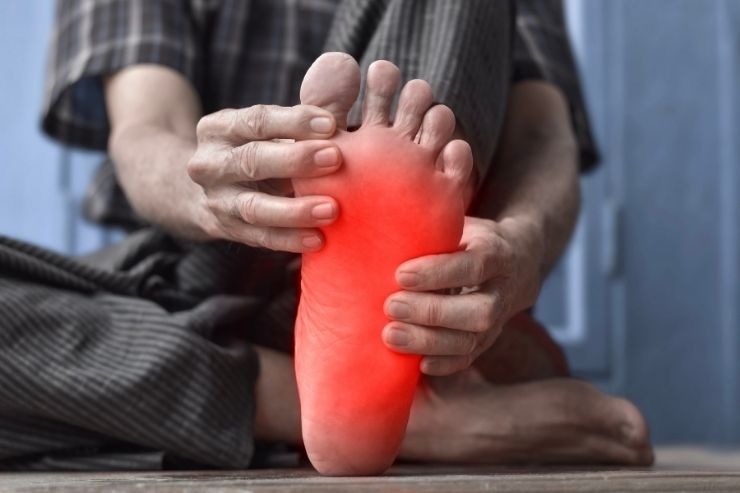Plantar Fasciitis
- Home
- Treatments
- Plantar Fasciitis

Plantar fasciitis is a common and often painful foot condition characterized by inflammation of the plantar fascia, a thick band of tissue that runs along the bottom of the foot, connecting the heel bone to the toes. This condition is particularly prevalent among athletes, runners, and individuals who spend prolonged periods on their feet. Understanding plantar fasciitis can help you recognize its symptoms and seek appropriate treatment.
What Causes Plantar Fasciitis?
Plantar fasciitis occurs when the plantar fascia experiences excessive strain or tension, leading to inflammation. Common causes include:
- Overuse: Engaging in high-impact activities, such as running or jumping, can put excessive stress on the plantar fascia.
- Improper Footwear: Shoes that lack proper support, cushioning, or fit can contribute to the development of plantar fasciitis.
- Foot Structure: Certain foot shapes, such as flat feet or high arches, can affect the way weight is distributed across the foot, increasing the risk of plantar fasciitis.
- Obesity: Excess weight can put additional pressure on the plantar fascia, leading to inflammation and pain.
- Age: As people age, the plantar fascia can lose elasticity and strength, making them more susceptible to injury.
Symptoms of Plantar Fasciitis
The primary symptom of plantar fasciitis is heel pain, which often manifests in specific ways:
- Sharp Pain: A stabbing pain in the heel, especially with the first steps in the morning or after long periods of sitting or standing.
- Stiffness: The heel and arch may feel stiff upon waking or after prolonged inactivity.
- Pain After Activity: Discomfort may worsen after physical activity, particularly high-impact exercises.
- Tenderness: The bottom of the foot may feel tender to the touch, especially around the heel.
Diagnosis of Plantar Fasciitis
Diagnosing plantar fasciitis typically involves a physical examination by a healthcare provider, who will assess the foot’s structure and the location of pain. Imaging tests, such as X-rays or MRI, may be used to rule out other conditions, such as fractures or heel spurs.
Treatment Options for Plantar Fasciitis
Effective treatment for plantar fasciitis focuses on reducing inflammation, relieving pain, and promoting healing. Common treatment options include:
- Rest: Avoiding activities that put excessive strain on the foot is crucial for recovery.
- Ice Therapy: Applying ice packs to the affected area for 15-20 minutes several times a day can help reduce swelling and alleviate pain.
- Stretching Exercises: Specific stretches for the Achilles tendon, calf muscles, and plantar fascia can improve flexibility and reduce tension.
- Orthotic Inserts: Custom or over-the-counter shoe inserts can provide support and cushioning, helping to distribute weight evenly across the foot.
- Footwear Modification: Wearing shoes with proper arch support and cushioning can alleviate symptoms and prevent further irritation.
- Nonsteroidal Anti-Inflammatory Drugs (NSAIDs): Over-the-counter medications, such as ibuprofen or naproxen, can help manage pain and reduce inflammation.
- Physical Therapy: A physical therapist can develop a personalized exercise program that focuses on strengthening the foot and calf muscles, as well as improving flexibility.
- Corticosteroid Injections: In severe cases, corticosteroid injections may be administered to reduce inflammation and provide temporary relief from pain.

